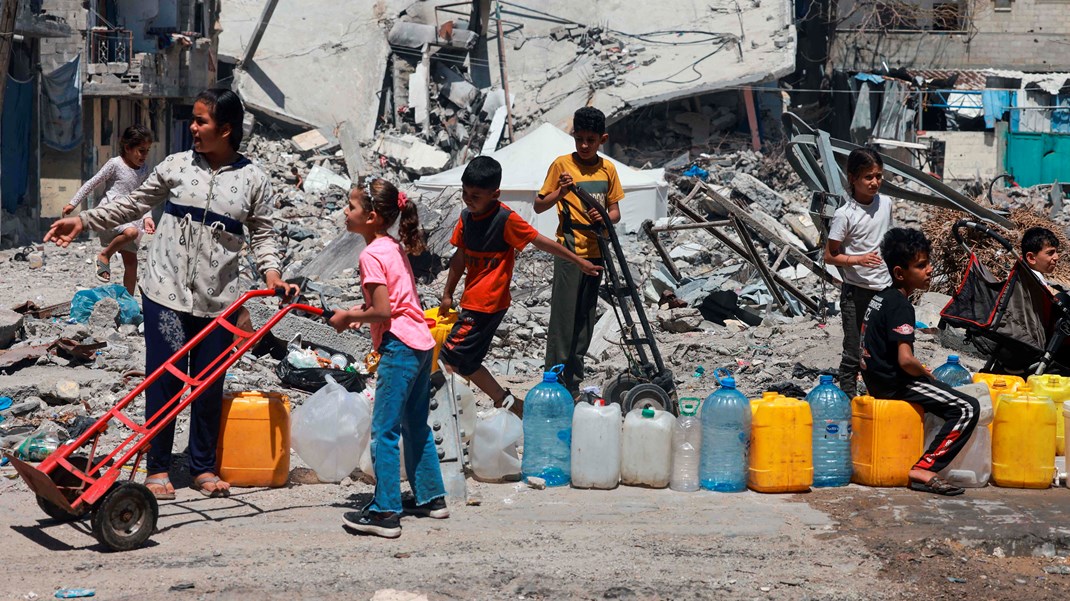Hunger on the rise in Africa, with Central and Western Africa faring the worst
FOREWORD
The 2018 Africa Regional Overview of Food Security and Nutrition is co-published for the very first time with the United Nations Economic Commission for Africa. This new collaboration provides opportunities to broaden the technical scope, promote a wider dialogue and visibility of the findings and policy implications, and continue FAO’s efforts to achieve closer collaboration on its flagship publications with the relevant UN agencies.
In 2017, FAO reported that the prevalence of hunger was on the rise in Africa, after many years of decline.
The latest data, presented in this years’ Regional Overview, confirms that this trend continues, with Central and Western Africa faring the worst. Today, a fifth of Africans are undernourished, representing a staggering 257 million individuals.
The worsening trend in Africa is due to difficult global economic and worsening environmental conditions and, in many countries, conflict and climate variability and extremes, sometimes combined. Economic growth slowed in 2016 due to weak commodity prices, in particular for oil and minerals. Food insecurity has worsened in countries affected by conflict, often exacerbated by drought or floods. For example, in Southern and Eastern Africa, many countries suffered from drought.
The deterioration of the food security situation and the lack of progress towards the WHO global nutrition targets makes it imperative for countries to step up their efforts, if they are to achieve a world without hunger and malnutrition by 2030. The call for greater action remains true even as the economic and climatic situation improves, offering hope of renewed progress in reducing food insecurity and malnutrition on the continent.
The need for greater efforts also emerges clearly from the findings of the inaugural biennial review of progress in implementing the goals of the Malabo Declaration. The evidence presented in the review indicates that countries committed to the values and principles of the Comprehensive Africa Agriculture Development Programme (CAADP), and that implement their National Agriculture Investment Plans, perform better. It is therefore imperative to strengthen commitments to the CAADP goals and to accelerate efforts toward formulating and implementing National and Regional Agricultural Investment Plans.
This year’s Regional Overview also presents evidence from a number of countries that have successfully reduced food insecurity and malnutrition. Their experience shows that policies, when appropriately designed, and effectively coordinated and implemented, are important drivers of progress towards Sustainable Development Goal 2, i.e. end all forms of hunger and malnutrition by 2030. In addition to specific food security and nutrition policies, this year’s report reviews four important cross-cutting topics, namely, youth employment, remittances, intraregional trade, and climate change. It highlights their interplay with the food system and their role in food security and nutrition.
Youth employment is a fundamental challenge across the continent and agriculture and the rural economy must play a key role in creating jobs to absorb the 10 to 12 million youth joining the labour market each year. However, the quality of jobs is equally important as most youth currently work in the informal economy and 67 percent of young workers live in povert y in sub-Saharan A frica. R ising incomes, urbanization and changing lifestyles pose challenges but also represent opportunities for the private sector to generate the growth and employment needed to provide decent jobs for our youth. Governments must step up efforts to help youth acquire skills, resources and the opportunity to participate in decisionmaking and policy dialogue.
International and internal migration affects millions of Africans, many of whom are youth, each year. The remittances they send home play an important role in reducing poverty and hunger as well as stimulating productive investments. International remittances amount to nearly USD 70 billion, about 3 percent of Africa’s GDP, and present an opportunity for national development that governments should endeavour to strengthen. At the same time governments must promote decent employment, inclusive growth and strengthened household resilience to avoid involuntary migration.
The signing of the African Continental Free Trade Area agreement is an opportunity to accelerate growth and sustainable development by increasing investment and trade, including trade in agricultural products.
Although agricultural intra-African exports rose from USD 2 billion in 2000 to USD 13.7 billion in 2013, they remain relatively modest and often informal. Considerably higher trade flows are expected once the barriers to investment and trade are removed. Opening trade of food also carries risks to consumer and producer welfare, and governments should avoid using trade policy for multiple objectives but rather combine trade reform with additional instruments, such as safety nets and risk–mitigating programmes, to achieve food security and nutrition goals.
Climate variability and extremes, in part due to climate change, is a present and growing threat to food security and nutrition in Africa and is a particularly severe threat to countries relying heavily on agriculture.
The effects of climate change, reduced precipitation and higher temperatures are already seen on the yields of staple food crops. Without climate change adaptation and mitigation, by 2050 an estimated additional 71 million people will be food insecure in the world, over half of whom will be in sub-Saharan Africa.
The 2017 edition of the Africa Regional Overview of Food Security and Nutrition reported that in many countries adverse climate conditions were among the reasons for rising levels of hunger. It is, therefore, timely that this year’s edition’s special focus is on presenting a broader evidence-based assessment of the threat posed by climate variability and extremes to food and nutrition security in the region. Many countries in Africa are at great risk to climate-related disasters and suffer from them frequently. Over the last ten years climate-related disasters affected on average 16 million people and caused USD 0.67 billion in damages across the continent each year. Greater efforts are needed to support rapidly growing insurance markets and establish strategic regional grain reserves to contain food price volatility and prevent food crises.
Greater urgency in building resilience of households, communities and countries to climate variability and extremes is needed. A myriad of challenges must be faced to building institutional capacity in designing, coordinating and scaling-up actions for risk monitoring and early warning systems, emergency preparedness and response, vulnerability reduction measures, shock-responsive social protection, and planning and implementing resilience building measures.
Strategies towards climate change adaptation and disaster risk reduction must be aligned as well as coordinated with interventions in nutrition and food systems across sectors.
Bukar Tijani, Assistant Director-General and Executive Secretary
Vera Songwe, Regional Representative for Africa Economic Commission for Africa


